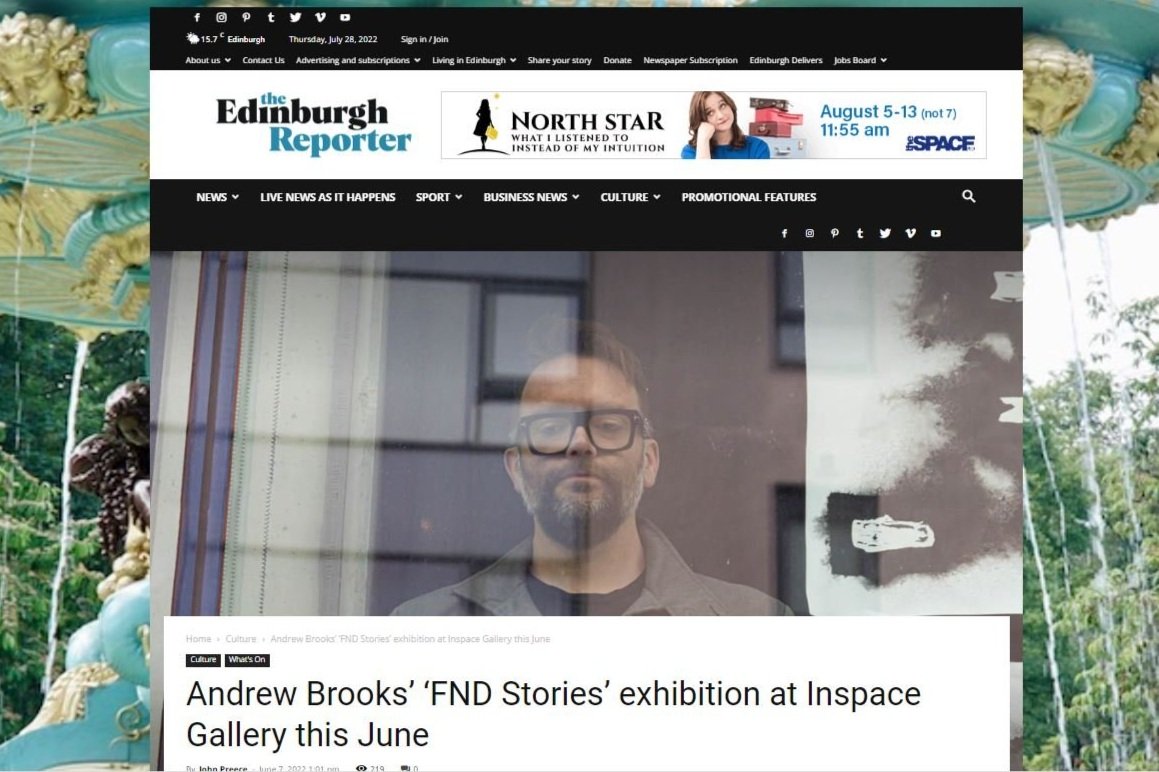This is a project aims to capture the stories and lived experience of those diagnosed with neurological condition, Functional Neurological Disorder, through art.
“the reason why I ever got involved was almost, not really validation but it’s the word that springs to mind – one thing I think about a lot is imposter syndrome with FND, you kind of don’t believe it, its just a functional disorder there’s nothing physically going wrong and so you start thinking that maybe you messed up and you’re the only one and to be part of something and to help kind of be part of creating something, you can see other people’s words and you can see other people’s experiences and that there are hundreds of people saying the same thing and that you’re not… because this is my experience, this is true, this is my truth and I find it really validating to be part of something.”
On 7th March 2024 a Discussion Event was held in at Fruitmarket, Edinburgh primarily for those diagnosed with FND - all the participants of the project were able to return for the event. The event was funded by Creative Informatics and supported by FND Hope UK. The photos above show images from the event.
The multidisciplinary exhibition, FND Stories is based on in-person interviews with 6 people from around the UK who live with FND along with contributions from over 90 of those diagnosed from around the world. The interviews gave first-hand accounts of living with FND. The artwork uses a range of media including silent video, text-based art, and large-scale ink and gold leaf pieces. The exhibition seeks to raise awareness of the condition and highlights the lived experiences of those diagnosed. It was showm through the 25m long windows of Inspace Gallery for the full period to engage as many people as possible, as well as a shorter internal show with an opening event.
Functional Neurological Disorder (FND) is a common and disabling cause of neurological symptoms. The symptoms are not caused by a structural disease of the nervous system but it is a problem with the “functioning” of the nervous system. It is a problem with how the brain and body send and receive signals. The symptoms can cause impairment in quality of life that is similar to and in some aspects worse than other neurological conditions. Symptoms are highly varied and can include weakness and abnormal patterns of movement, attacks of abnormal movement / change in awareness that resemble epileptic seizures, sensory problems, cognitive problems, and visual and speech problems.
FND is a constant part of my life as my wife was diagnosed with it in 2015 following a bicycle crash involving a car. I began to make and exhibit work about our experiences living with FND reflecting on our married life, subsequently broadening the project making further work with members of Southwest England based charity ‘FND Friends’. Having moved to Scotland I secured funding from Creative Informatics. The ‘Connected Innovators’ funding stream has given me the time and resources to continue making work with those diagnosed with FND developing new skills to represent people’s stories and raise awareness about the condition.








With support from FND Hope UK (whom I am independent from) I have been able to broaden the project and had responses from around the globe, including America, Canada and Gibraltar, with over 90 participants answering the question what three words would you use to describe your FND – the top three responses being frustrating, debilitating and misunderstood. Six in-person interviews with participants from around the UK were filmed and transcribed, these stories are the basis for much of the artwork. Those interviewed are from a range of ages, backgrounds, types and severity of condition and were asked the same set of questions about life with FND. In response to “what is a good day with FND?” one interviewee answered, “a good day is having a shower and not having to sleep after it (laughing)...good days are when I can do the things I used to take for granted”.
The artwork is multidisciplinary and varied including video, sound, word and physical paper-based art, to tell different facets of stories, often focussing on specific details. Large paper-based pieces, some of which are over 2m long, use ink, water, gold leaf, graphite dust and latex, encoding words, meanings and information. The encoded presentation is to create a slower understanding of what is being discussed or described be it data or words, hopefully enabling a more nuanced interaction with the subject matter. The interview films are shown as a pair without sound, one film showing the subject’s reaction while listening to their favourite childhood story and the other show’s them explaining about their life with FND. Removing the sound avoids the primary forms of storytelling and shifts focus from what is being said to the emotional communication of the person. Relying on body language and the contrast of the two films allows the viewer to emotionally engage with the teller.”
My aim is to make work that can portray some of the lived experiences and stories of those diagnosed with FND. I don’t want to portray a list of symptoms but reveal different facets of people’s stories.
“This artwork allowed my Mum to ask questions that she’s never asked me before, because at the time when it first started I was out of it for years and so, yeah, the art allowed me to have a conversation with my Mum that I’ve never had before so that was really good for me….thanks.”
Links for further information or help with FND:
FND Hope UK : https://fndhope.org/
FND Guide :https://neurosymptoms.org/en/
Long read essay about the history of FND:
‘Cadenza for Fractured Consciousness : A Personal History of the World’s Most Misunderstood Illness’ by @FNDPortal (twitter handle)
medium.com/@fndportal/cadenza-for-fractured-consciousness-e9c236dc7bf2
































































